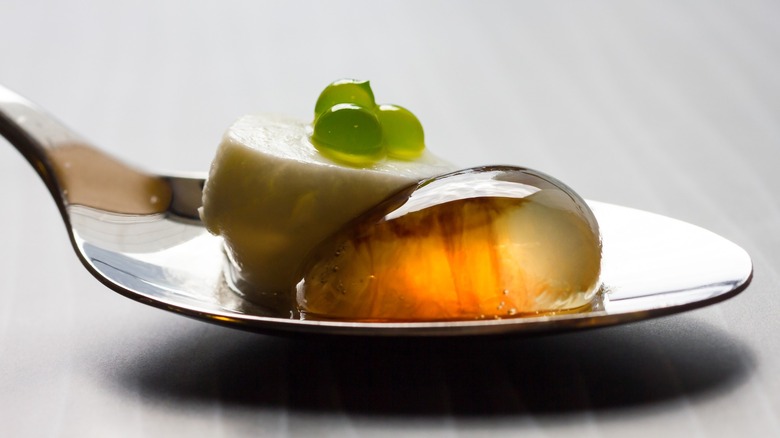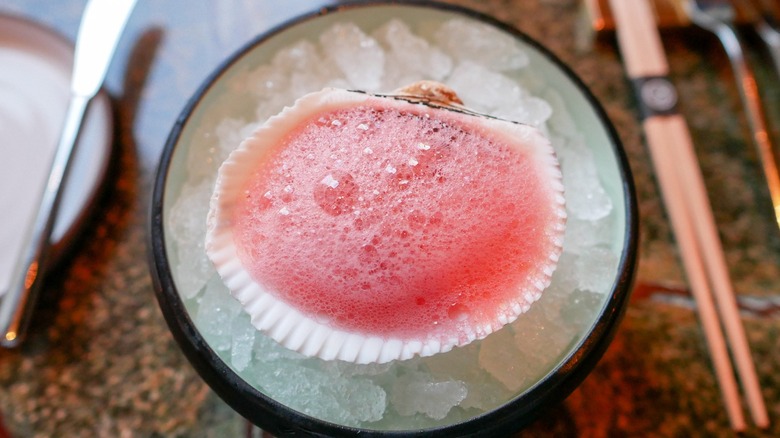The Competitive History Of Amuse-Bouche
If you've ever experienced an artfully crafted amuse-bouche, a bite-sized palate-pleasing prelude to a meal's main courses, you've encountered the essence of this French term that means "to amuse the mouth." Usually eaten by hand and designed to stimulate the appetite, an amuse-bouche is often served in fine dining establishments and Michelin-starred restaurants as a complementary welcome bite from the chef. These delicate miniature mouth-amusers delight guests with big flavors that showcase the chef's technique with umami-rich offerings — such as morsels of savory gougères adorned with edible flowers or bold bites of ceviche served on spoons, for example.
Though relatively recent, the history of amuse-bouche is a competitive chapter in the culinary world. It emerged in the 1970s during the rise of the French nouvelle cuisine movement, which emphasized fresh ingredients prepared in simple but sophisticated ways that later deeply influenced New American cuisine. During this era, chefs pushed back against the heavy, extravagant flavors of the past. Serving amuse-bouche quickly became a hallmark of the movement, offering chefs a platform to showcase their creativity and stand out in a culinary landscape filled with rising talent. This spirit of competition continues to live on today in events like the Gramona Amuse Contest in which chefs are tasked with creating inventive amuse-bouche to complement wine pairings.
After experiencing a decline in popularity during the late 1980s, amuse-bouche has since made a strong comeback and reclaimed its place in the global fine-dining scene. Once overlooked, these intricate creations are once again celebrated as a defining feature of culinary innovation and artistry.
Small bites, big ideas
You might wonder if amuse-bouche is just a fancier version of hors d'oeuvres, those quick one-bite appetizers like deviled eggs or phyllo cups served before meals. Not exactly. Though both are small bites, amuse-bouche serves a distinct purpose by offering a glimpse into the chef's ingenuity and the restaurant's overarching culinary vision. These dishes often highlight fresh, natural flavors and feature simple yet elegant presentations. Many restaurants even refresh their selections multiple times daily with a focus on seasonal ingredients and innovative techniques.
Beyond showcasing seasonal flair, amuse-bouche allows chefs to freely explore new culinary horizons. These tiny dishes serve as a canvas for crafting bold, intricate flavors that might be too adventurous for larger, more universally appealing plates. As celebrity chef Jean-Georges Vongerichten describes, they are "the best way for a great chef to express big ideas in small bites" (via CHEFIN). This freedom of culinary expression is matched with versatility, as amuse-bouche can be served after orders are placed or at the start of a meal. However, chefs may also strategically place them between courses. When timed thoughtfully, they enhance the meal's flow, providing a refreshing palate cleanse and a seamless transition to the next dish.

